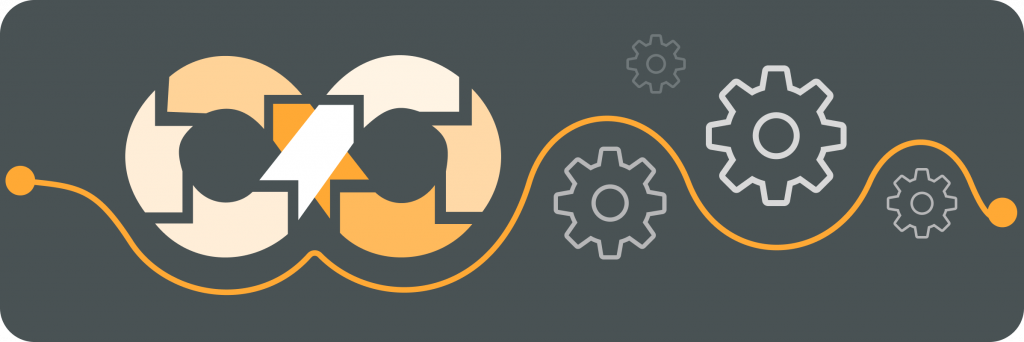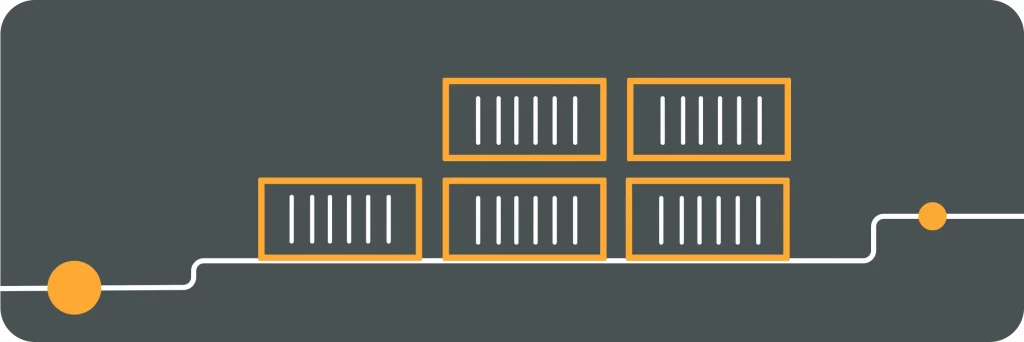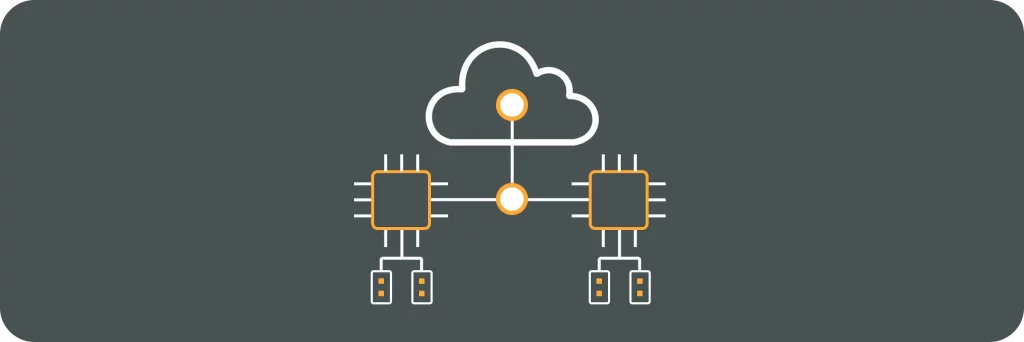Observability is a crucial concept in the field of DevOps that plays a significant role in enhancing system reliability and facilitating continuous improvement. It refers to the ability to gain insights into the internal workings of a complex system through the analysis of various measures such as metrics, logs, and traces. This article will delve into the different aspects of observability in DevOps, including the definition, importance, key components, role, implementation, and challenges associated with it.
Understanding the Concept of Observability
Before diving into the specifics, it is important to have a clear understanding of what observability entails in the realm of DevOps. Observability goes beyond just monitoring and focuses on the ability to understand and derive meaningful insights from the behavior and interactions within a system. Unlike traditional monitoring, observability does not only provide a surface-level view but allows for in-depth analysis of the system’s internal state.
The Definition of Observability
Observability can be defined as the measure of how well the internal state of a system can be inferred from its external outputs. It involves collecting and analyzing various data points that provide insights into the system’s performance, behavior, and potential issues. By understanding these internal aspects, teams can proactively identify and address issues before they escalate, enabling efficient troubleshooting and continuous improvement.
The Importance of Observability in DevOps
Observability is imperative in DevOps as it empowers teams to effectively monitor, debug, and optimize complex systems. It enables engineers to gain critical insights into how different components of the system are behaving and interacting with each other. This visibility allows for quick identification of bottlenecks, performance issues, and potential failure points, ultimately leading to improved system reliability and uptime.
Moreover, observability fosters a culture of continuous improvement. By collecting and analyzing data on system behavior and trends, teams can not only react to issues but also proactively identify areas for enhancement. This data-driven approach helps in making informed decisions, optimizing system performance, and enhancing the overall user experience.
Enhancing Observability with Advanced Monitoring Techniques
While traditional monitoring tools provide valuable insights, advanced monitoring techniques can further enhance observability in DevOps environments. These techniques include distributed tracing, log analysis, and real-time analytics.
Distributed tracing allows teams to trace the flow of requests across different services and components, providing a detailed understanding of how the system behaves under different scenarios. This helps in identifying performance bottlenecks and understanding the impact of changes made to the system.
Log analysis involves analyzing log files generated by various components of the system. By aggregating and analyzing these logs, teams can gain insights into system behavior, identify errors or anomalies, and troubleshoot issues effectively.
Real-time analytics involves monitoring and analyzing system metrics in real-time. This allows teams to detect and respond to anomalies or performance degradation immediately, minimizing the impact on users and ensuring a seamless user experience.
By leveraging these advanced monitoring techniques, teams can enhance their observability capabilities and gain a deeper understanding of their systems, enabling them to make informed decisions and continuously improve system performance.
Key Components of Observability
Observability comprises various components that collectively provide comprehensive insights into a system’s behavior. These components include metrics, logs, and traces.
When it comes to ensuring the smooth operation and performance of a complex system, having a robust observability strategy is crucial. By leveraging key components such as metrics, logs, and traces, teams can gain a deep understanding of how their system behaves under various conditions and work towards optimizing its performance and reliability.
Metrics
Metrics are quantitative measures that provide a numerical representation of various aspects of a system’s performance. They can include metrics related to response time, error rates, throughput, latency, and resource utilization. By tracking and analyzing these metrics, teams can gain visibility into how the system is performing and identify potential issues or areas for improvement.
Furthermore, metrics play a vital role in establishing baselines and setting performance targets for a system. By establishing key performance indicators (KPIs) based on relevant metrics, teams can monitor the system’s health and performance levels over time, enabling them to proactively address any deviations or anomalies that may arise.
Logs
Logs are records of events and messages that are generated by different components within a system. They provide a detailed chronological account of the system’s activities, such as user actions, error messages, warnings, and other relevant information. Team members can analyze logs to trace the sequence of events and identify the root cause of issues or investigate system behavior during specific scenarios.
Moreover, logs serve as a valuable source of information for troubleshooting and debugging purposes. By examining the log entries, teams can reconstruct the series of events leading up to an issue, enabling them to pinpoint the exact moment when an error occurred and take corrective actions to resolve it effectively.
Traces
Traces are used to track the flow of requests as they travel through various services or components within a system. They provide a detailed view of the execution path and timing of requests, allowing teams to understand the performance and dependencies between different components. Tracing can help in identifying performance bottlenecks, inefficient processes, and latency issues across a distributed system.
Additionally, tracing plays a critical role in understanding the end-to-end flow of requests in a distributed system. By visualizing the path of a request as it traverses through different services, teams can identify areas where optimizations can be made to enhance overall system performance and user experience.
The Role of Observability in DevOps
Observability plays a vital role in DevOps by contributing to enhanced system reliability and facilitating continuous improvement efforts. Let’s explore these aspects in more detail:
Enhancing System Reliability
Observability helps in improving system reliability by providing teams with real-time insights into the state of the system. By monitoring metrics, logs, and traces, teams can proactively identify potential issues and resolve them before they impact end-users. This proactive approach significantly reduces the mean time to detect and recover from incidents, enhancing system availability and minimizing downtime.
Facilitating Continuous Improvement
Observability enables continuous improvement by providing teams with actionable data and insights. By analyzing metrics, logs, and traces, teams can identify trends, patterns, and areas for optimization. These insights drive data-informed decision-making, allowing teams to prioritize and implement changes that lead to improved system performance, scalability, and user experience.
Moreover, observability in DevOps is not just about monitoring and reacting to system behavior; it also plays a crucial role in fostering a culture of collaboration and transparency within teams. By having a shared understanding of the system’s behavior and performance, team members can work together more effectively towards common goals. This shared visibility also helps in breaking down silos between different teams, promoting cross-functional communication and problem-solving.
Driving Innovation and Agility
Another key aspect of observability in DevOps is its role in driving innovation and agility within organizations. By continuously monitoring and analyzing system data, teams can quickly adapt to changing requirements and market conditions. This agility allows organizations to experiment with new ideas, technologies, and processes, leading to innovation and competitive advantage in the fast-paced digital landscape.
Implementing Observability in DevOps
Implementing observability requires the right tools and best practices to maximize its benefits. Let’s explore how organizations can effectively implement observability:
Tools for Observability
There are various tools available for implementing observability in DevOps. These tools specialize in collecting and analyzing metrics, logs, and traces. Popular observability tools include Prometheus, Grafana, ELK Stack (Elasticsearch, Logstash, and Kibana), Jaeger, and OpenTelemetry. It is crucial for organizations to evaluate their specific requirements and select the appropriate tools that align with their needs.
Best Practices for Implementing Observability
To ensure successful implementation of observability in DevOps, organizations should consider the following best practices:
- Define and track relevant metrics that align with business objectives and system performance goals.
- Implement centralized logging to consolidate logs from different sources and enable efficient analysis.
- Adopt distributed tracing to gain visibility into system interactions and performance across different components.
- Establish automated alerting mechanisms to promptly notify relevant stakeholders about anomalies, errors, or performance degradation.
- Incorporate observability as a core aspect of the development and deployment pipeline, ensuring its integration and adherence throughout the entire software development lifecycle.
Challenges in Achieving Observability
While observability offers significant benefits, there are several challenges that organizations may face in its implementation:
Common Obstacles
Some common obstacles include the complexity of distributed systems, the sheer volume of data generated, and effectively correlating data from different sources. Additionally, ensuring consistent instrumentation across the system can be challenging, especially in a microservices architecture. Organizations must overcome these obstacles to achieve comprehensive observability.
Strategies to Overcome Challenges
To overcome these challenges, organizations can consider the following strategies:
- Adopting standard observability frameworks and libraries to ensure consistent instrumentation across different components.
- Implementing scalable data collection and storage mechanisms to handle the volume of data generated by the system.
- Leveraging machine learning and advanced analytics techniques to identify meaningful patterns and anomalies in the collected data.
- Establishing cross-functional collaboration and communication between development, operations, and quality assurance teams to ensure a unified approach towards observability.
Conclusion
In conclusion, observability is a critical aspect of DevOps that enables teams to gain deep insights into the internal workings of complex systems. By leveraging metrics, logs, and traces, organizations can enhance system reliability and facilitate continuous improvement. Implementing observability requires the right tools and best practices to effectively collect, analyze, and act upon the available data. While challenges may arise during the implementation process, organizations can overcome them by adopting appropriate strategies and fostering a culture of observability. Embracing observability empowers teams to proactively monitor and optimize system performance, leading to enhanced user experiences and business success in the dynamic landscape of modern software development and operations.




